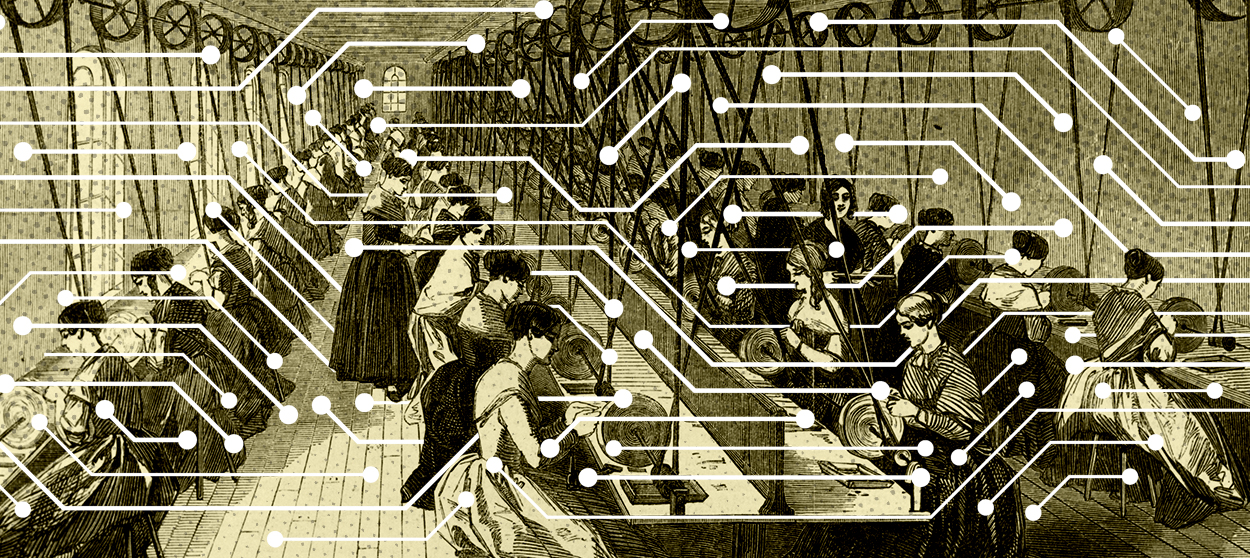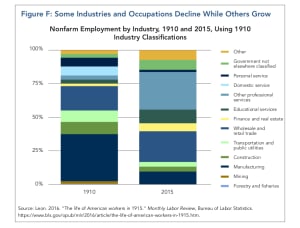How robots became a scapegoat for the destruction of the working class
Robots didn't destroy the safety net or workers' rights. They didn't even steal jobs.


Should workers fear the robots? You don't have to look far to find lots of people shouting "yes."
Magazines and newspapers blare headlines like "Welcoming our new robot overlords," "When your new co-worker is a robot," and "You will lose your job to a robot — and sooner than you think." Studies suggest anywhere from 9 percent to 47 percent of American jobs could be automated in the next few decades. In 2017, Bill Gates proposed a "robot tax" to address the problem. Andrew Yang, a long-shot contender for the Democratic presidential nomination, puts the threat of mass joblessness due to automation at the center of his campaign — and he wants a universal basic income to deal with it.
But there's another narrative, too.
The Week
Escape your echo chamber. Get the facts behind the news, plus analysis from multiple perspectives.

Sign up for The Week's Free Newsletters
From our morning news briefing to a weekly Good News Newsletter, get the best of The Week delivered directly to your inbox.
From our morning news briefing to a weekly Good News Newsletter, get the best of The Week delivered directly to your inbox.
Three papers in the last year — one by the Aspen Institute's Future of Work Initiative, one from the Roosevelt Institute and Duke University, and another in development from Roosevelt — suggest maybe the automation we're seeing now is little different from the technological advances we've seen in every other era. Instead, the problems of inequality, stagnation, and unemployment (which get blamed on the robots) are due to policy choices and power dynamics in the U.S. economy.
First, some historical perspective: For as long as America's had something like a modern capitalist economy, automation and technology have been disrupting and remaking the jobs market. In the Aspen paper, authors Conor McKay, Ethan Pollack, and Alastair Fitzpayne note that agriculture went from a third of all jobs to 1 percent of them over the last century. Manufacturing accounted for a third of all non-farm jobs in 1910 and fell to 9 percent by 2015. Meanwhile jobs in information, business services, and health care jumped from 3 percent to 29 percent over the same period and retail went from 13 percent to 23 percent. As Mark Paul notes in one of the Roosevelt papers, Time magazine was worried about the "automation jobless" as far back as 1961. It has been ever thus.

(Graph courtesy of the Aspen Institute's Future of Work Initiative.)
Yet over the last half century, the level of employment went up, not down. Historically, technology has tended to increase the number of jobs out there. By making it cheaper to provide some goods and services, automation frees up money to be spent on other things. Even as it makes it easier to meet old needs, technology creates new needs we never envisioned. It improves work conditions, (potentially) increases leisure time, raises living standards, and lengthens life expectancy. "We must separate the destruction of jobs from the destruction of work," Paul argues. As long as the amount of work needed is not reduced, the jobs will be created to meet it.
A free daily email with the biggest news stories of the day – and the best features from TheWeek.com
Indeed, many metrics suggest technology is disrupting the economy less these days than in decades past. Fundamentally, technology's affect on the labor market comes down to productivity growth — getting more value out of fewer workers and fewer hours of work. Yet productivity growth was 2.7 percent in the midcentury, then fell to 1.2 percent after 2000, and is close to 1 percent today. Rates of worker churn — job separations, quits, layoffs, and hires — are all either flat or down over the last 15 years. Capital investment, which finances new technology and automation for businesses, is also lower today than in past decades.
Why, then, has the story about robots coming for everyone's jobs caught such fire?
One answer all three papers converge on is that what's changed isn't the speed or nature of new technology; it's that workers are feeling the change more than they once did.
In America, the reason often comes to down to the immense power executives hold over their employees.
Writing in the other forthcoming Roosevelt paper, Brishen Rogers points to a key background rule. It's simply much easier in America for employers to hire and fire workers without going through red tape than it is in other Western countries. Unions can mitigate the problem somewhat — they make companies at least somewhat more democratic — but unions have virtually disappeared from America's private sector. Additionally U.S. labor law doesn't require employers to consult with the remaining unions over technological strategy.
This all puts a thumb on the scale in favor of owners' power over their employees, which means they can enjoy the profits from automation while the workers pay the costs. And companies have become much better at exploiting those legal advantages: They increasingly rely on independent contractors and subcontracted workforces, which allows them to dodge legal obligations to pay benefits or minimum wages, and they monitor and schedule their workers with ever more exactness. Indeed, Rogers argues that while advancing technology hasn't actually displaced jobs in the aggregate, it's made it much easier and cheaper for companies to exploit these already-existing advantages of power.
Finally, the Aspen paper tells another interwoven story: Technology has always been churning through the U.S. economy, altering what jobs are available and changing the mix of skills employers need. And it's always been a challenge for workers to adjust. But for much of the 20th century, America did a good job helping workers do just that: We created a national and freely available K-12 education system; we passed GI bills to help Americans go to college; the New Deal and the Great Society created a raft of new programs like Social Security, Medicare, Medicaid, food stamps, and traditional welfare; and employers — often under pressure from a strong labor movement — invested heavily in worker training.
Then we reversed course: We massively slashed federal and state budgets for higher education and instead financed college attendance with a giant debt bubble that has savaged students' finances for life. Unions collapsed, businesses cut on-the-job and employer-sponsored training way back, and federal grants to support worker training also shrunk. Instead of continuing to expand the safety net, we gutted traditional welfare and started adding work requirements.
In other words, it's not that technology changed. It's that the programs that helped Americans deal with how technology is always upending the job market were dismantled. Along with all the other alterations to the U.S. economy, that's made the same (or even lower) rates of automation much more painful for workers to endure. The Aspen paper cites a host of findings that workers displaced by automation can experience major earning losses that last decades, more employment instability from then on, and even higher rates of divorce and mortality. That displacement can also knock out local economies, if the businesses relied on that particular population of workers for their consumption.
The good news is that we can reverse engineer all these stories to find our solutions. And all three papers provide a wealth of ideas to retool education, expand the safety net, and democratize businesses. Many of them are quite ambitious — adopting Medicare-for-all, for instance, or stocking corporate boards with workers — but ambition is exactly what's needed.
Now, there's always the possibility that "this time will be different." Some technologists fear that while technological disruption hasn't hit quite yet, developments like artificial intelligence mean it will grow exponentially in the near future, knocking out vast swaths of middle-skill and service work that hitherto might have seemed immune to automation. The Aspen paper lends some credence to this idea, though it remains speculative. Rogers digs through the literature and comes away much more skeptical that we're headed for any sort of technological tipping point.
The future, as always, is unknowable. But even if this time really is different, that doesn't change the underlying challenge. Paul quotes Stephen Hawking, who pointed out in 2016 that, "If machines produce everything we need, the outcome will depend on how things are distributed. Everyone can enjoy a life of luxurious leisure if the machine-produced wealth is shared, or most people can end up miserably poor if the machine-owners successfully lobby against wealth redistribution."
Ultimately, the problem of technological change is inseparable from the problem of democracy in our economy. There's nothing natural or inevitable about "how things are distributed." It's all determined by our laws and our policies — and those laws and policies can be what we want them to be.
Jeff Spross was the economics and business correspondent at TheWeek.com. He was previously a reporter at ThinkProgress.
-
 Alaa Abd el-Fattah: should Egyptian dissident be stripped of UK citizenship?
Alaa Abd el-Fattah: should Egyptian dissident be stripped of UK citizenship?Today's Big Question Resurfaced social media posts appear to show the democracy activist calling for the killing of Zionists and police
-
 Biggest political break-ups and make-ups of 2025
Biggest political break-ups and make-ups of 2025The Explainer From Trump and Musk to the UK and the EU, Christmas wouldn’t be Christmas without a round-up of the year’s relationship drama
-
 Why 2025 was a pivotal year for AI
Why 2025 was a pivotal year for AITalking Point The ‘hype’ and ‘hopes’ around artificial intelligence are ‘like nothing the world has seen before’
